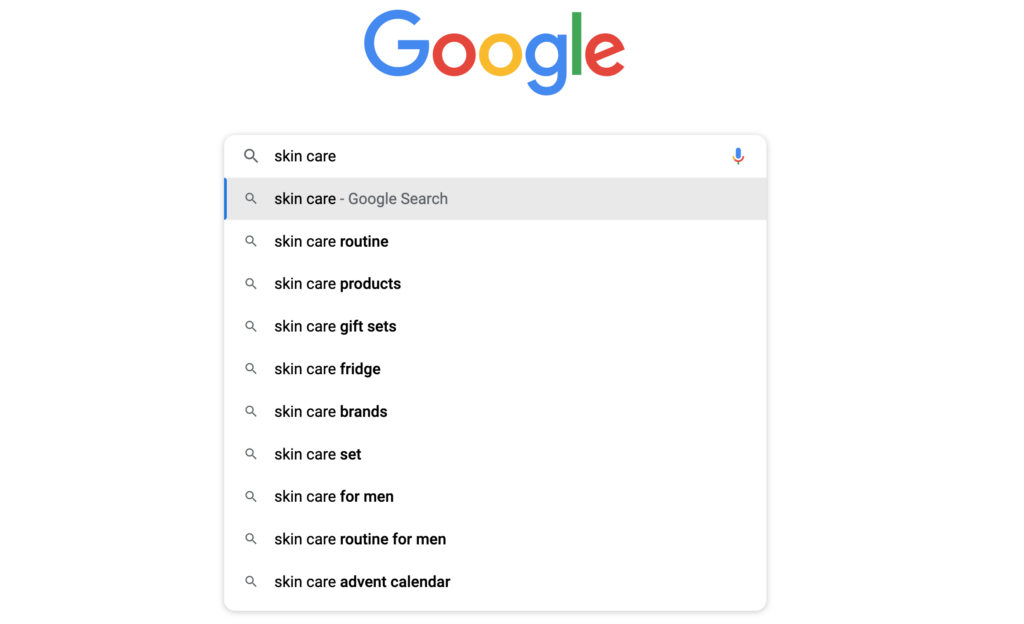How to write blog posts that rank on Google
It’s a tough world out there on the internet, and if you want to be found by your potential customers, you’ve got to work for it. One way to do this is learning how to write blog posts.
Writing blog posts that rank well for specific keywords is a crucial part of any online business owner’s job. Understanding how to write blog posts will help you become visible on Google and other search engines.
To use this guide, you’ll have already set up a website and blog page.
Here, we’ll show you how to get started with keyword research, structure your post so it ranks well in search engines, and optimise your content, all whilst ensuring your blog posts are actually helpful to readers.
Do your keyword research
Keyword research is probably the most complex concept to grasp around blog creation. It will probably take the most time too. But once you have your keywords sussed, you’ll be able to include them in multiple blog posts.
Think of keywords as ‘what someone would type into Google’. Most terms that people search for are three words or longer. These are called ‘long-tail keywords’, which are more specific than your regular keyword.
Keywords are phrases that you associate with your business and want to show up in search results for.
‘Skin care’ is a keyword. Whereas, ‘skin care routine for acne’ is a long-tail keyword. Get to know what people are searching for by typing a keyword into Google and viewing the suggestions that come up.

When you enter your search term, you can also figure out what people are searching for by scrolling down to Google’s ‘people also searched for’, ‘People also ask’ and ‘snippets’. These are a good indicator of what your customers are interested in.



There are plenty of free tools for keyword research too:
- Google’s Keyword Planner: This tool gives you an idea of how many people search for specific keywords and the average cost per click (CPC) for those terms. It also shows related keywords that may not be in your list but could help expand it.
- Moz Keyword Explorer or SEMrush’s Keyword Generator: these give suggestions based on popularity and volume as well as other factors such as competition level or difficulty ranking for certain terms.
- Google AdWords: This free service lets you enter up to 10 different phrases at once so that they can all be analysed together. Then it serves up stats about each one including estimated monthly searches and competition levels.
- Wordstream: you can for search keywords that people are using in your your industry, and find accurate, targeting advertising ideas.
- Ahrefs: tells you the difficulty of ranking for each term, analyses the competition for you, and offers free audits of your website, and produces easy-to-read SEO metrics.
Create a structure for your blog post
It’s not just about the words you write. Knowing how to write blog posts comes down to the structure. Your blog post should be structured in a way that makes sense and helps Google understand what it is that you’re trying to say.
You should always include an introduction, body and conclusion (although I prefer to call them “opening paragraph,” “main content” and “closing paragraph,” respectively).
Before you begin writing, note down a few bulletpoints on what you want to include in each section. Think about where you might want to include images, videos, or gifs.
Google crawlers and bots will scour your post for signs that it’s easy to read, doesn’t waffle on, and is user-friendly. Keep them happy by creating a solid structure and following the next points.
Use headings to break up the text on your page
Headings can be used to organise the content of a page, create a structure for your blog post and signal important information.
But it’s no good just adding ‘bold’ to your headings. Google won’t recognise that – it recognises code. In every blog uploader, you’ll find options “h1”, “h2″ and”h3”. This is a type of code that tells Google there’s a heading there.
Using these heading options usually bolds and capitalises the selected wording so they stand out from the rest of your text.
You should use a new heading for every 300 words your write.
Write efficiently so as not to overwhelm readers
Google knows that humans skim read when viewing articles on the internet. So keep your paragraphs and sentences short.
Paragraphs should usually be no longer than three sentences long (just imagine how long one paragraph is when viewed on a phone!). And 80% of your sentences should be 20 words or less.
A blog post should be more than 300 words. Google likes to see you post long articles of around 1,500 words – but keep in mind that your target audience may not be interested in blog posts this long.
A stay-at-home dad searching for a recipe won’t want a five-minute read, they’ll want to cut to the chase. Whereas, a business owner wanting to learn how to write blog posts might prefer a longer read to get into the nitty gritty of the subject.
Link to other content
Utilise your sentences to link to other web content that is relevant to what you’re saying to your reader.
Internal links are links to other pages on your website. These tell Google that these pages are important. They also help keep readers on your site for longer and help them to learn more from you.
External links are links that take the reader to other websites. Ensure you’re linking to websites that have authority (BBC, Hubspot, LinkedIn, Reddit, etc. – sites that people trust).
You can also ask other companies to include an external link to your website from theirs. These are known as backlinks. Backlinks you receive from other websites increase your domain authority.
Optimise the readability of your post
Your blog posts will receive a readability score from search engines. The readability score is based on:
- paragraph and sentence length
- subheading distribution
- Consecutive sentences
- Use of passive voice
- Use of transition words
- Flesch reading ease score
- and text presence
You can learn more about each of these on Yoast.
Add alt text and meta descriptions
If you’re using images in your blog post, it’s important to optimise them so they can rank in search results. You can do this by adding alt text to each image.
As bots and crawlers can’t see images, alt text simply describes to search engines what is in the picture. Alt text also shows up when someone hovers over an image in their browser. It’s usually an explanation of what’s happening in the image such as: “Three men in hard hats and hi-vis jackets dig holes in the ground”.
When it comes to understanding how to write blog posts well, you mustn’t forget meta descriptions.
Meta descriptions are what show up when someone searches for something relevant to your post and clicks on one of the results. They’re also used when sharing links on social media platforms such as Twitter or LinkedIn. They should be short descriptions that let people know what they’re clicking into before they click it!
Write for humans, not bots
As you write a blog post, keep in mind that you are writing for humans first, search engines second. While you can satisfy a bot’s checklist by doing all these things, your ultimate aim is to educate your human reader.
Your goal is not just to rank highly on Google. It’s also to build an audience of readers who enjoy what they read when they come across your content in their social feeds or via search results.
If a human isn’t satisfied with your blog post, they won’t come back. Write in a friendly tone that is easy to read and engaging.
The way you choose to present yourself as an author will make or break this goal. So don’t forget about the people who are reading!
Scatter your keywords throughout your post
To rank for a keyword, you need to use it in your post. But you also need to use it wisely.
Keywords should be in the title, first paragraph and last paragraph of your blog post. This is because Google knows that people tend to read articles from top-to-bottom and left-to-right. So, these areas have a higher chance of being seen by visitors who scan through content quickly.
You should sprinkle keywords throughout other parts of the article as well; at least once every 300 words.
But remember, it’s humans you’re writing for so don’t force a keyword into a sentence if it doesn’t sit well there.
In conclusion
Be helpful to humans and Google will reward you with better ranking.
You might be thinking to yourself: “But how do I know if my blog post is helpful or not?” Ask yourself if any human would find your content useful or interesting enough to share on social media. Or, would they share the information they read on your blog in conversation with someone? If the answer is yes… then congratulations! You have just written a blog post that will rank on Google (and probably get lots of traffic).
Remember that search engines are trying to help people find what they’re looking for. If you can provide them with information they need, then they’ll reward you with better ranking.
This means that you shouldn’t just focus on keywords when writing content. Use headings and subheadings so readers can easily navigate through your page. Scatter your keywords throughout each post. Add images where appropriate. Use Yoast’s writing tips.
And finally: the very simple answer on how to write blog posts? Write in a way that makes sense for humans first.





